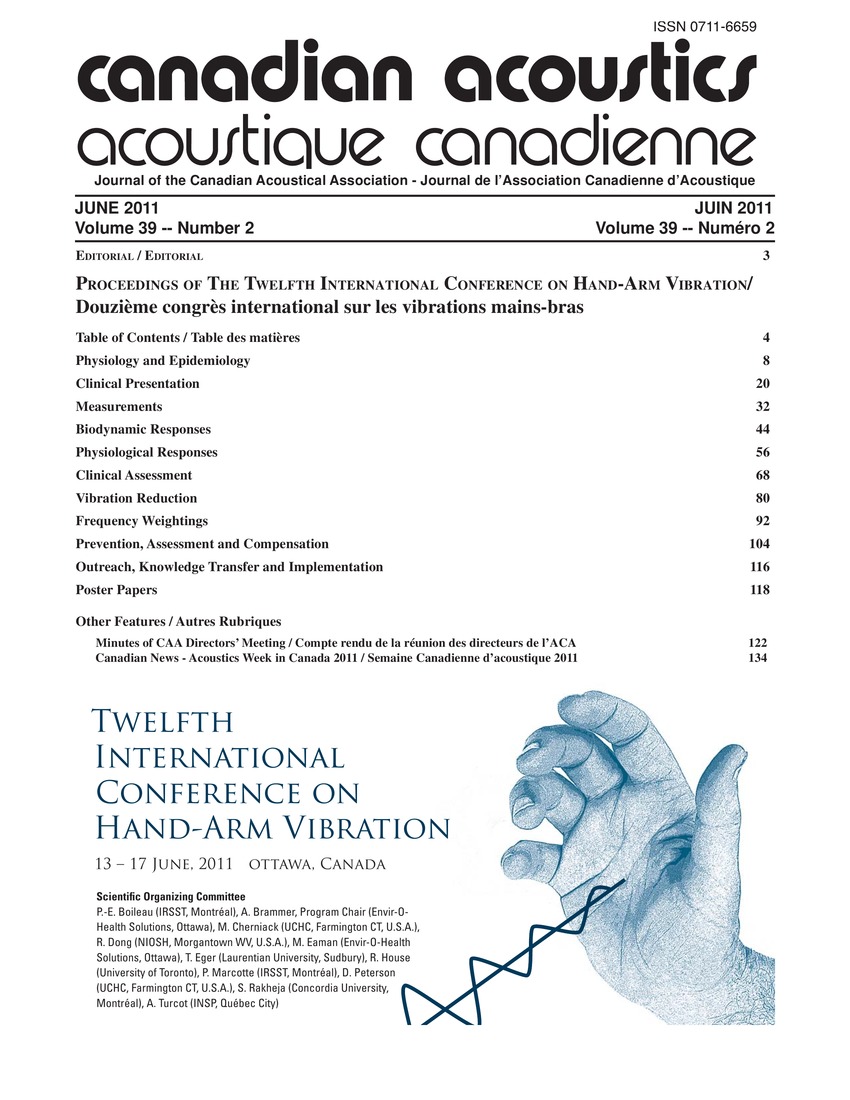Impact of european directive 2002/44/ec on the risk of developing hand-arm vibration syndrome in great britain
Keywords:
Machine vibrations, Occupational diseases, Carpal tunnel syndrome, European directive, Great Britain, Hand-arm vibration, Hand-arm vibration syndrome, Industrial injuries, Product specifications, Vibration modelAbstract
Trends in risk from hand-arm vibration (HAV) since 1994 are reported, based on work for the Health & Safety Executive (HSE) with employees, employers, suppliers, and their vibration advisers. Work has included inspection of workplaces, investigation of reportable cases of hand-arm vibration syndrome (HAVS), and activities to raise awareness of risks from HAV and their control. A HSE sponsored study in the mid 1990s found that about 5 million people were exposed to HAV at work in Great Britain. Industrial Injuries Disablement Benefit (IIDB) is paid for disabling cases of HAVS in specified industries and for Carpal Tunnel Syndrome (CTS) associated with exposure to vibration. Re-negotiation of product specifications to avoid time-consuming re-work has reduced HAV exposure for the manufacturer and cost for the customer. Where use of powered hand-tools has continued, it has often been possible to re-equip with lower vibration models.Additional Files
Published
How to Cite
Issue
Section
License
Author Licensing Addendum
This Licensing Addendum ("Addendum") is entered into between the undersigned Author(s) and Canadian Acoustics journal published by the Canadian Acoustical Association (hereinafter referred to as the "Publisher"). The Author(s) and the Publisher agree as follows:
-
Retained Rights: The Author(s) retain(s) the following rights:
- The right to reproduce, distribute, and publicly display the Work on the Author's personal website or the website of the Author's institution.
- The right to use the Work in the Author's teaching activities and presentations.
- The right to include the Work in a compilation for the Author's personal use, not for sale.
-
Grant of License: The Author(s) grant(s) to the Publisher a worldwide exclusive license to publish, reproduce, distribute, and display the Work in Canadian Acoustics and any other formats and media deemed appropriate by the Publisher.
-
Attribution: The Publisher agrees to include proper attribution to the Author(s) in all publications and reproductions of the Work.
-
No Conflict: This Addendum is intended to be in harmony with, and not in conflict with, the terms and conditions of the original agreement entered into between the Author(s) and the Publisher.
-
Copyright Clause: Copyright on articles is held by the Author(s). The corresponding Author has the right to grant on behalf of all Authors and does grant on behalf of all Authors, a worldwide exclusive license to the Publisher and its licensees in perpetuity, in all forms, formats, and media (whether known now or created in the future), including but not limited to the rights to publish, reproduce, distribute, display, store, translate, create adaptations, reprints, include within collections, and create summaries, extracts, and/or abstracts of the Contribution.


